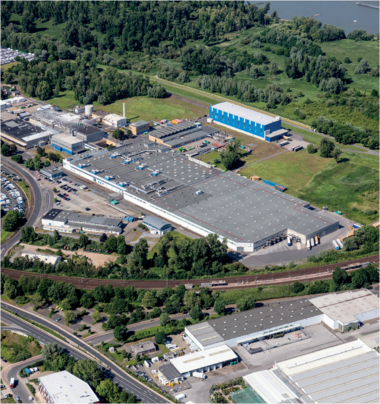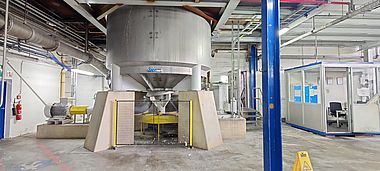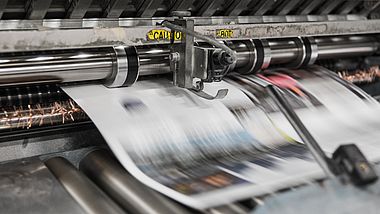Participating company | Essity Operations Neuss GmbH |
Project location | Neuss |
Industry | Hygiene and health/paper industry |
Technologies used | Frequency converters for medium-voltage motors, energy management, energy scouts |
Energy efficiency | 1,806,684 kWh/yr (electric) |
CO2 savings | Approximately 800 t CO2e/yr |
Investment/operating costs | 0/use of apprentices |
Payback period | 0–3 years |
Funding programmes | None |
Essity Operations Neuss GmbH produces tissues and toilet paper at its Neuss location. Pulps are basic raw materials used for paper production. The Essity plant in Neuss operates two paper machines that produce 110,000 tonnes of parent reels for manufacturing purposes at a rate of up to 2,200 m/min per year. To produce the paper, the dried pulp is dissolved and prepared in five different pulpers: one long-fibre and one short-fibre pulper per paper machine and one broke pulper, which recycles the broke produced during processing for production. In the past, the rotors in the pulpers ran continuously at full power with approximately 190 KW from the beginning of the process (the soaking of the pulp bales) to the pumping out of the pulp slurry. In 2020, the new energy team inspected this process in order to reduce energy consumption. The aim was to determine the necessary speed of the rotors. The team were looking to define the target speeds at which the motors consume as little power as possible without the material settling in the pulper. The tests for this ran for two months from October to November 2020. As a result, the rotor speed during the waiting period after pulping until the pulp is pumped into the draining chest could be halved in some cases. This reduced the power consumption of the motors by more than half.
As part of the IHK Niederrhein’s (Industrie und Handelskammer Niederhein – Lower Rhine Chamber of Industry and Commerce) Energy Scout Initiative, two apprentices were able to optimise the process flow even further as part of their training, so that the system is switched off for approximately 15 minutes after each emptying or restarts with a 15-minute delay. This generated additional energy savings. All of the measures together provide cumulative energy savings of 1.8 GWh of electricity.
This project is transferable to the paper industry and similar processes in which large, thus far unregulated, drives are in use.





